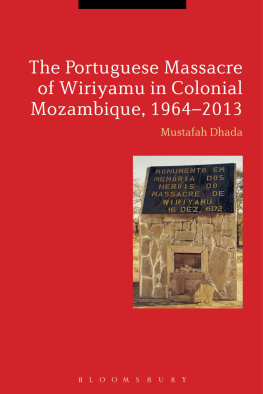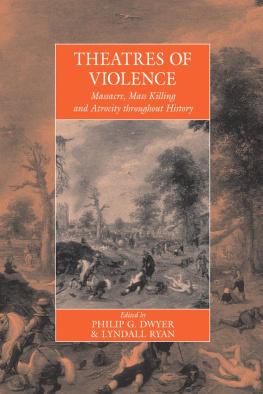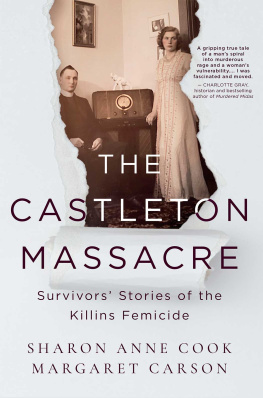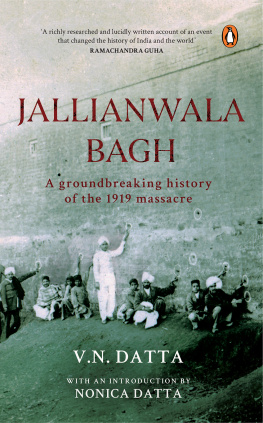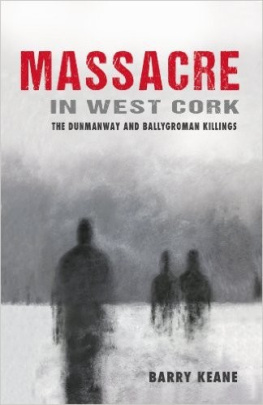No scholar has more deeply engaged with the Wiriyamu Massacre of December 16, 1972, than Mustafah Dhada. No one has more firmly insisted on placing the people, the place, and the corroborated events and processes on the record, nor steadfastly confronted efforts to diminish the evidence or its significance.
This book, with all the hallmarks of Dhadas earlier workeasy transitions across space, close detail, and deep explication of methodsnot only makes a truly impressive case for the value of oralcy and its embedded dynamics, but, by setting out compelling testimony from such a broad range of people, he draws readers directly into these events and their nuanced and layered complications. Each narrative casts its own special light on one or another aspect of the overall story. Whether revealing a villages relationship to the protective or predatory lion spirit, probing the impact of Vatican II on Mozambiques Bishop Dom Sebastio Soares Resende, or exposing the duplicitous conduct of the infamous Portuguese apologist Jorge Jardim, the narrators incrementally provide the pieces that readers, with Dhadas support, come to experience as a whole.
Dhada set daunting challenges for himself in both the Portuguese Massacre of Wiriyamu and An Oral History. Kathleen Sheldons review of the first aptly quoted from the cover of Arundhati Roys novel The Ministry of Utmost Happiness : How to tell a shattered story? By slowly becoming everybody. No. By slowly becoming everything.The multiple narratives that piece together this shattered story hinge on peoples memories, but often their words and perspectives emerge as embedded in the landscape: the riverbeds, the boulders, the machambas , the tamarind and baobab trees. Indeed, everybody and everything in the Wiriyamu triangle must be pieced together.
The baobab in the Wiriyamu village was much more than a mnemonic device for oral narration or a crucial shelter. In the obscene language of the Portuguese Special Forces, so much else could be cleaned up, but not the tree. The powerful and feared Polcia Internacional e de Defesa do Estado (PIDE, International Police for the Defense of the State)/Direo-Geral de Segurana (DGS, General Directorate for Security) villain Chico Kachavi ordered his commandos: Aphani Wense!! Aphani Wense. [Kill them all! Kill the lot leave no one alive. No witnessesthey will denounce us]. People, their words, and the physical places of their lives entangle in ways that endure.
This work cedes center stage to oral narratives. It is about time. In his review of Portuguese Massacre, Manuel Bandeira Jeronimo questioned Dhadas unrestrained confidence in the heuristic potential of oral history and revelatory powers of ethnographic fieldwork..., arguing that History is not the register of testimonies in situ or the echo chamber of previously unheard voices, however crucial and inclusive they may be. History is not memory.
In honoring peoples words, the limits of their narrations, their ways of knowing and telling, and the physical setting before, during, and after the events of December 16, 1972, Dhada incrementally moves the center and guides students of history into a greater appreciation of the heuristic potential of performance and oralcy. In the early 1990s, Ngugi wa Thiongo argued for the centrality of African common parlance, assignation of meaning, and vernacular languages.
Dhadas work further unsettles assumptions regarding archives. Archival, print, and iconic sources are too often imagined to surpass forms of oralcy. In the manner of feminist scholars, however, we should seriously consider why the written record should not be interrogated in light of oralcy as often as oral testimony is tested in light of the written record. Can history and memory be erased by the removal of sheets of paper? History is exciting detective work, whether in the archives, in the library, in the press, or among historical actors, but this book will definitely serve as a model for scholars seeking to decolonize history, build confidence in oralcy, and enhance the partnership of ethnographic and historical methods.
Historians struggle to hear and understand previously unheard voices, and to rearrange dominant narratives into the kaleidoscopic patterns that emerge in complicated vernacular conversations. Dhada aspires to bring forward testimony from those whose voices were previously unheard: data-gatherers and their transmitters, victims before their erasure, survivors, massacre perpetrators and priests.
Since I began my historical research in Portugal and Mozambique in the 1970s, I repeatedly confronted the erasure of African people and their experiences in archival and print sources. The historical actors whose agency interested me were broadly absent and almost always unnamed. Sometimes they were counted as though they were commoditiesthey were just so many blacks. Their personhood was erased. I could read the language of the paper track and was trained to work with it, but it was of limited use. When I was finally able to meet and converse with the Mozambican people at the heart of my research, I had mediocre language skills and was inexperienced to the point of being clueless. Incrementally I learned to listen more carefully and was able to absorb and understand more. Mozambicans conveying their truths through oralcy and performance often upended my expectations about narratives and images. I increasingly welcomed being surprised and puzzled. Scholars and students at many stages will profit from the insights Dhada shares with us here, about both doing research and grappling with oral narratives.


